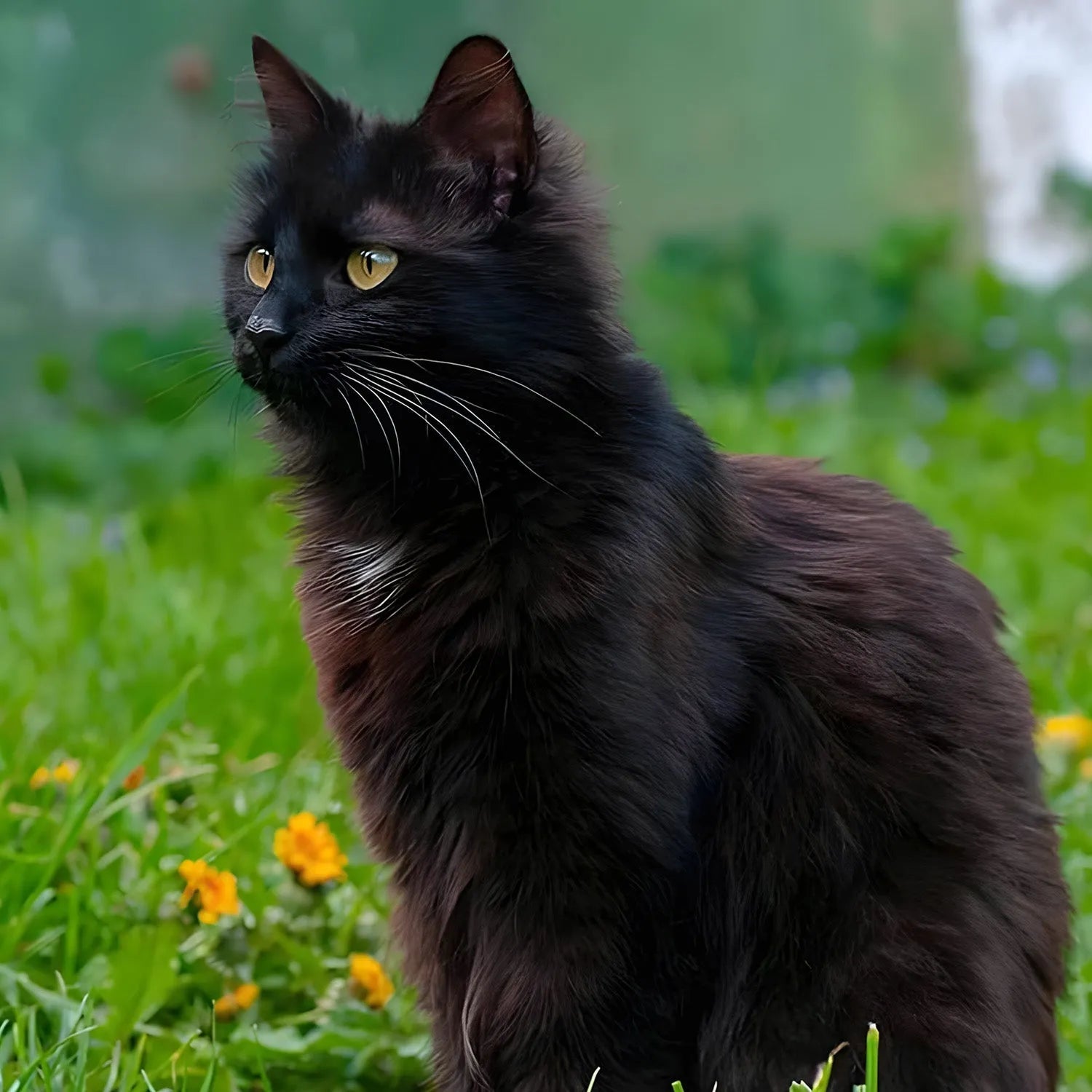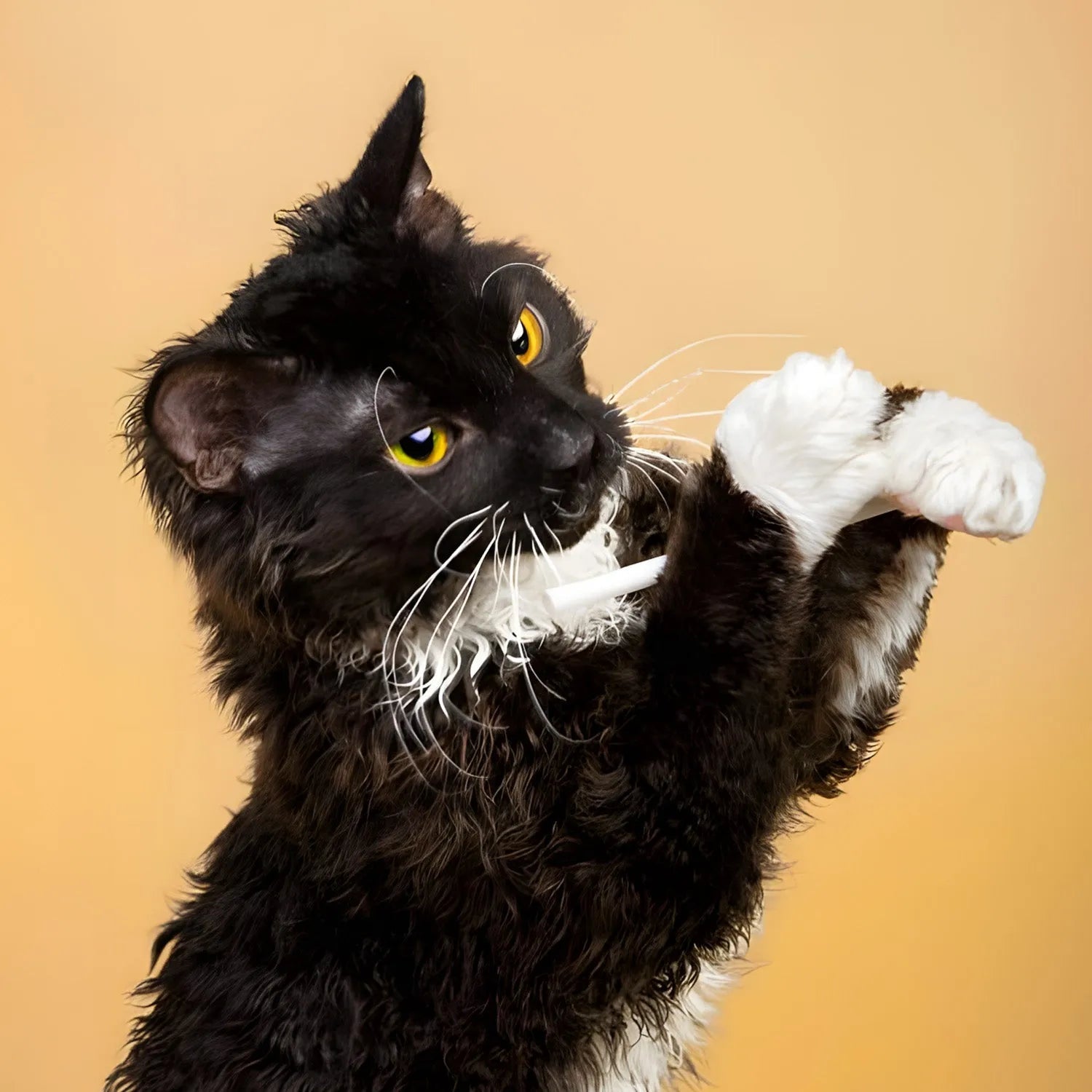Chausie: The Wild and Adventurous Feline
Introduction
The Chausie cat is a wild-looking, high-energy breed that was created by crossing domestic cats with jungle cats (*Felis chaus*). These exotic-looking cats are striking in appearance, with a tall, muscular build and a playful, adventurous nature. If you’re looking for a cat that combines the look of a wild feline with the temperament of a domestic companion, the Chausie might be the perfect choice. In this blog, we’ll explore the Chausie’s lifestyle, behavior, grooming needs, trainability, and how it interacts with humans and other pets.
Ratings (1-5)
-
Environmental Adaptability: 4
-
Food Consumption: 4
-
Need for Companionship: 5
-
Trainability: 4
-
Tolerance of Children: 4
-
Ease of Domestication: 3
History and Origins
The Chausie cat is a hybrid breed that originated in the 1990s when breeders began crossing domestic cats with jungle cats (*Felis chaus*), a wild feline species found in Asia and the Middle East. The goal was to create a cat with the exotic appearance of a wildcat but with the temperament of a domestic pet. The name "Chausie" is derived from *Felis chaus*, the species that contributed to the breed’s wild appearance. Over time, careful breeding has produced a cat that retains the athletic build and striking looks of its wild ancestors while being friendly and social enough to live in a domestic environment. The Chausie is still a rare breed, but it has gained a dedicated following among those who appreciate its unique combination of wild beauty and affectionate nature.
Physical Characteristics and Colors
The Chausie is a large, muscular cat with long legs, a broad chest, and an athletic build. It has a wild, exotic appearance that closely resembles a jungle cat, with a short coat that is sleek and shiny. The breed’s ears are large and set high on the head, giving it an alert, expressive look. The Chausie’s eyes are almond-shaped and can be gold, green, or yellow, adding to its exotic appeal. Chausies come in three recognized coat colors: solid black, black grizzled tabby, and brown ticked tabby. The grizzled tabby pattern is particularly unique and is a direct inheritance from the jungle cat, making Chausies stand out from other domestic breeds.
Lifestyle and Behavior
Chausies are known for their high energy levels and adventurous personalities. They are incredibly active cats that love to run, jump, climb, and explore their surroundings. Chausies are often described as "dog-like" in their loyalty and playfulness, and they thrive on interactive play with their human companions. This breed requires plenty of physical and mental stimulation, so it’s essential to provide them with toys, climbing structures, and opportunities to engage in active play. Despite their wild appearance, Chausies are social cats that form strong bonds with their owners. They are affectionate and enjoy being involved in family activities but can also be independent and content to entertain themselves when needed.
Trainability and Intelligence
Chausies are highly intelligent cats and can be trained to follow commands, perform tricks, and even walk on a leash. They are quick learners and respond well to positive reinforcement techniques, such as treats and praise. Chausies enjoy mental challenges, making them adept at learning new things, whether it's fetching, sitting on command, or navigating an agility course. Their intelligence and curiosity make them natural explorers, and they benefit from having plenty of physical and mental stimulation to keep them engaged. Training sessions with Chausies are often a rewarding experience, as they enjoy the interaction and thrive on challenges.
Social Behavior and Human Interaction
Chausies form strong bonds with their human families and are known for their affectionate and loyal nature. They are social cats that enjoy being part of the family and will often follow their owners around the house, eager to be involved in daily activities. Chausies are also known for their playful, energetic behavior, and they thrive on interaction with their human companions. While they are independent enough to entertain themselves, they prefer to be around their owners and can become lonely if left alone for long periods. Chausies are particularly well-suited to active households where they can receive plenty of attention and playtime.
Compatibility with Children and Other Pets
Chausies are excellent companions for children due to their playful and energetic nature. They enjoy interactive play and are generally tolerant of children’s antics, provided they are treated with respect. Additionally, Chausies tend to get along well with other pets, including dogs, as long as they are properly introduced. However, their strong prey drive may make them less compatible with smaller animals like birds or rodents. Their sociable and adaptable nature allows them to integrate well into multi-pet households, but it's essential to provide proper introductions and ensure that all pets are comfortable with one another.
Grooming and Care
The grooming needs of a Chausie are minimal due to their short coat. Weekly brushing is usually sufficient to remove loose hairs and keep their coat looking sleek and healthy. Regular dental care, ear cleaning, and nail trimming are also important to maintain their overall health. Despite their low-maintenance grooming needs, Chausies enjoy the bonding time that grooming sessions provide, and it can be a great way to strengthen the bond between cat and owner. Bathing is generally not necessary unless the cat gets particularly dirty, as Chausies are generally good at keeping themselves clean.
Health and Lifespan
Chausies are generally healthy cats, but like all hybrid breeds, they can be prone to certain genetic conditions. These may include digestive issues, such as food intolerances, which are more common in hybrids. Regular veterinary check-ups and a balanced diet are essential to maintain their health. With proper care, Chausies can live up to 12-15 years. Regular monitoring and preventive care are important to ensure a long and healthy life for your Chausie cat.
Environmental Adaptability
Chausies are adaptable and can thrive in various living environments, although they are particularly well-suited to households with plenty of space for them to run, jump, and explore. They are known for their resilience and can adjust well to different climates and household settings. However, due to their high energy levels, they do best in environments where they can receive plenty of physical and mental stimulation. Chausies are well-suited to indoor living but will benefit from interactive toys, climbing trees, and other enrichment activities to keep them entertained and happy.
Feeding Requirements
A balanced diet is crucial for maintaining the Chausie cat's health and energy levels. High-quality cat food that is rich in protein is recommended. Fresh water should always be available. Because Chausies are highly active, they may require more calories than the average domestic cat to support their energy levels. Consult your veterinarian for specific dietary recommendations based on your cat's age, weight, and health needs. Monitoring their diet to prevent obesity and ensure they get the nutrients they need is essential, especially considering their unique hybrid background.
Conclusion
The Chausie is a wild-looking, adventurous breed that brings excitement and companionship to any household. Their intelligence, playful nature, and striking appearance make them wonderful pets for families and individuals who can provide the attention and stimulation they crave. If you're looking for a cat that combines the beauty of the wild with the loyalty and affection of a domestic pet, the Chausie might be the perfect fit for you.
For more information about other cat breeds and pet care tips, stay tuned to our blog!
References:
-
Johnson, R. (2021). "The Wild and Adventurous Chausie Cat." *Journal of Feline Studies*, 35(3), 201-215.
-
Harris, E. (2020). "Caring for Your Chausie Cat: A Comprehensive Guide." *Cat Lover’s Magazine*, July issue, pp. 30-40.
-
Richards, A. (2019). "Health and Wellness in Chausie Cats." *Veterinary Journal*, 79(2), 123-137.


